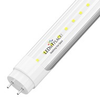For athletes or sports players, there’s absolutely no difference between days and nights and so when it comes to national sports being played during nights, lighting has a great role to play. For a good ROI (Return on Investment) in lighting requires a sound analysis of the sports area and the kind of sport being played before the installation of any lighting fixture. This process of investment (where both fixed and variable costs are involved) requires the expertise of lighting designers, electrical engineers etc. Whatsoever, the two kinds of light fixtures that make their way to sports stadiums are -- Outdoor LED pole lights and LED flood lights. This blog is being dedicated to LED pole lights.
A good lighting project will always encompass the following factors for a good pole lighting.
LED Pole Lights: Factors To Consider
The following factors determine if LED pole lights can perfectly suit any sports lighting application.
The Levels of Illuminance
The levels of Illuminance vary from one sport to another and it is your job as a State Sports organizer to get to know the exact lux levels needed for your sports stadium by undertaking a photometric analysis. But on an average, the lux levels required for any sport such as basketball, baseball, rugby or soccer being played requires a minimum of 500-750 lux. When you plan to install LED pole lights, 7000 lumens to approximately 40,000 lumens is what you can expect out of these lights. If one lux means 1 lumen per square meter, you must be able to determine, how many lumens of LED pole lights you will need to illuminate your entire sports stadium.
Do check out the CCT (Correlated Color Temperatures) of LED pole lights. These may be available from any LED lighting manufacturer in CCTs of 3000K, 4000K and 5700K. Out of these, a 5700K (daywhite light color) is what you will need for sports lighting and nothing more or nothing less than that. And, this is because at this CCT, the light resembles the sun post noon but not high noon which is perfect for having an increased focus and concentration for sports players.
The CRI (Color rendering Index) also plays a great role when the colors of objects or sports field will appear to be as real as the Index states. For any outdoor pole lighting condition, a CRI of 70+ has been found to be appropriate.
Over all, for any ports lighting, there should be a minimum amount of light spill so as to not interfere with other activities being carried out in the neighbourhood.

The Height, Weight of Poles and Spacing
The height and the quality of poles matter a lot when trying to install LED pole lights. The light pole manufacturers will always require the details of how many luminaires need to be installed and how much impact resistance the luminaires can have. The height of poles on an average must range from 9-14 feet so that there isn’t any light glare.
The weight of the poles should be such that the poles can be resistant towards any corrosion. You need poles made of such material and finish that is corrosion-resistant and vandal-resistant. In just the way, you need a durable pole, LED pole lights come with such housing that makes the luminaire durable and robust. LED pole lights from reputed manufacturers will have an aluminum housing of commercial and industrial grade.
As far as any spacing of the pole from the playground is concerned, the lighting designers normally recommend a distance of 5 meters to be kept from the edge of the playing area. It must be remembered that people often do make mistakes when having an exact match between the kind of luminaires and the height of poles. You should never cut the poles even if luminaires produce glare. In fact, it’s better to replace the luminaire and have one with lumens that can exactly fit your requirements.
Human-Centric and Eco-friendly Lighting
For any sports lighting, the luminaire should cause a minimum amount of glare. And, this is where the light distribution of pole lights comes into play. Often, the pole lights can be mounted in such a way that the desired light distribution is obtained. The brightness or positioning of the luminaire should be such that it reduces the need for players to look towards it for viewing the game objects such as ball or bat. As such, the LED pole lights in extreme contrast with conventional pole lights such as metal-halides or HID cause minimal or no glare and that is because of the beam angle these lights may have. The 120-degree beam angle is what you will usually find in LED pole lights.
Another concern in this regard is the hazardous radiation such as infra-red or ultraviolet light rays. The metal-halides usually have UV rays that affect the human eyes and may cause eye-strain, cataract, etc. LED pole lights are far better in the sense that these lights do not contain any harmful radiation in them.
You must also note that the conventional metal-halides do have mercury in them which harm the environment after they are disposed of. This produces a carbon footprint and because of which environment does not remain a healthy place for human beings to live in.
In Conclusion
Besides the above factors, when a true cost-analysis is done, you get to know, if LED pole lights are the kind of luminaires that can fetch you long-term returns. On average, these LED pole lights are energy-efficient and bring low energy bills. In a nutshell, the factors mentioned here can be a good starting point for having an appropriate stadium lighting.


















































































